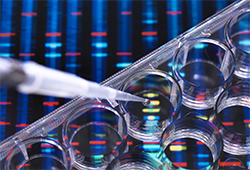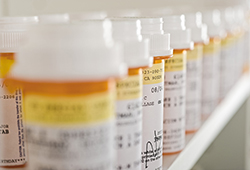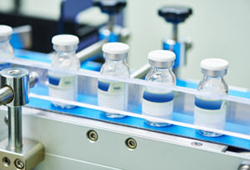 On January 19, 2021, the FDA issued guidance for licensed and investigational cellular and gene therapy (CGT) manufacturers during the COVID-19 pandemic. This new guidance supplements the recommendations provided in FDA’s June 2020 guidance regarding manufacturing controls to prevent contamination in drugs, risk assessment of SARS-CoV-2 as it relates to drug safety and quality, and continuity of manufacturing operations as applied to all drug and biological product manufacturers.
On January 19, 2021, the FDA issued guidance for licensed and investigational cellular and gene therapy (CGT) manufacturers during the COVID-19 pandemic. This new guidance supplements the recommendations provided in FDA’s June 2020 guidance regarding manufacturing controls to prevent contamination in drugs, risk assessment of SARS-CoV-2 as it relates to drug safety and quality, and continuity of manufacturing operations as applied to all drug and biological product manufacturers.
The new guidance provides risk-based recommendations to minimize potential transmission of SARS-CoV-2 to patients and facility personnel with specific considerations relating to, among other things, the assessment of donors, cellular and tissue source materials, manufacturing processes, manufacturing facility control, material testing, and the number of patients that can be treated with the product. While FDA acknowledges in the guidance that is not aware of any CGT products that have been contaminated with SARS-CoV-2 or of information indicating transmission of SARS-CoV-2 via CGT products, FDA notes that “CGT manufacturers are expected to evaluate whether [the virus] poses new risks in the context of their specific products, facilities, processes, and manufacturing controls.”
FDA recommends that CGT manufacturers review the current good manufacturing practice requirements and recommendations and perform a risk assessment that identifies, evaluates, and mitigates factors that may allow for transmission of SARS-CoV-2 to patients and facility personnel and include a description of the risk assessment and mitigation strategies in any investigational new drug application (IND), biologics license application (BLA), or master file. Since this is an evolving area, manufacturers should look to scientific literature to provide justification and support for their risk assessment and mitigation strategies.
CGT manufacturers should evaluate their manufacturing operations for SARS-CoV-2 risks and be sure that all risk assessments of production controls, including any follow-up and changes, are approved by their quality unit and appropriately documented within their quality management system.
 Goodwin Life Sciences and Healthcare partner Roger Cohen and associate Anne Brendel along with Life Sciences and FDA associate Steven Tjoe kicked off Goodwin’s multi-part webinar series “Disrupt + Innovate + Transform: A Healthcare Webinar Series” with “Key Regulatory Issues for Digital Health Companies” discussing the key regulatory issues affecting digital health, telemedicine and healthcare IT companies. The webinar series will be presented by a cross-disciplinary team of Goodwin lawyers exploring the topics that are most relevant for the healthcare industry today. From ever-changing regulatory guidelines to digital health, women’s health and privacy, Goodwin will take attendees through these topics and more and provide guidance to help you navigate the current healthcare landscape.
Goodwin Life Sciences and Healthcare partner Roger Cohen and associate Anne Brendel along with Life Sciences and FDA associate Steven Tjoe kicked off Goodwin’s multi-part webinar series “Disrupt + Innovate + Transform: A Healthcare Webinar Series” with “Key Regulatory Issues for Digital Health Companies” discussing the key regulatory issues affecting digital health, telemedicine and healthcare IT companies. The webinar series will be presented by a cross-disciplinary team of Goodwin lawyers exploring the topics that are most relevant for the healthcare industry today. From ever-changing regulatory guidelines to digital health, women’s health and privacy, Goodwin will take attendees through these topics and more and provide guidance to help you navigate the current healthcare landscape.

 On January 19, 2021, the FDA issued
On January 19, 2021, the FDA issued  On January 12, 2021, the U.S. Food and Drug Administration (FDA) published its
On January 12, 2021, the U.S. Food and Drug Administration (FDA) published its  As follow-up to our October
As follow-up to our October  On December 27, 2020, the President signed into law the “Consolidated Appropriations Act, 2021” (the “Act”). Included within this omnibus legislation are several provisions (in Division BB, Title III, Subtitle C) that affect the regulation of generic drugs and biosimilar medicines by the U.S. Food and Drug Administration (FDA).
On December 27, 2020, the President signed into law the “Consolidated Appropriations Act, 2021” (the “Act”). Included within this omnibus legislation are several provisions (in Division BB, Title III, Subtitle C) that affect the regulation of generic drugs and biosimilar medicines by the U.S. Food and Drug Administration (FDA). In this post, we discuss FDA’s conduct of inspections of manufacturing facilities for new drugs and biologics during the COVID-19 pandemic. These inspections, known as pre-approval and pre-licensure inspections (PAIs/PLIs, respectively), are performed to give FDA assurance that a manufacturing site named in a new drug or biologics license application is capable of manufacturing the product according to current good manufacturing practices (cGMPs) and producing the product at commercial scale.
In this post, we discuss FDA’s conduct of inspections of manufacturing facilities for new drugs and biologics during the COVID-19 pandemic. These inspections, known as pre-approval and pre-licensure inspections (PAIs/PLIs, respectively), are performed to give FDA assurance that a manufacturing site named in a new drug or biologics license application is capable of manufacturing the product according to current good manufacturing practices (cGMPs) and producing the product at commercial scale.
